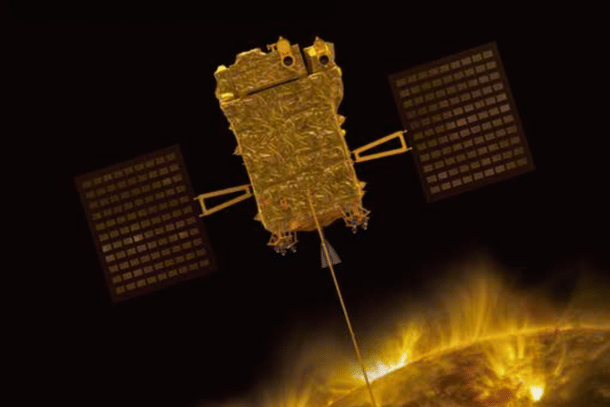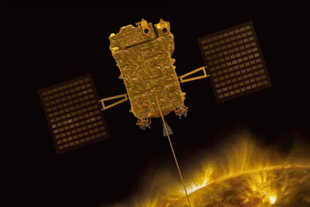News Brief
India's First Solar Mission: Magnetometer Boom On Aditya-L1 Deployed, To Measure Low Intensity Interplanetary Magnetic Field In Space
Kuldeep Negi
Jan 26, 2024, 06:30 PM | Updated 06:30 PM IST
Save & read from anywhere!
Bookmark stories for easy access on any device or the Swarajya app.


The Indian Space Research Organisation (ISRO) on Thursday (25 January) said that the magnetometre boom on board the Aditya-L1 satellite to measure the low intensity interplanetary magnetic field in space has been successfully deployed.
"The Six-meter long magnetometer boom on the Aditya-L1 satellite has been successfully deployed. It is deployed in the Halo orbit at the Lagrange point L-1, on 11 January 2024. The boom had been in stowed condition for 132 days since the Aditya-L1 launch," the ISRO said in a statement.
The boom carries two state-of-the-art, high-accuracy fluxgate magnetometer sensors that measure the low intensity interplanetary magnetic field in space, according to ISRO.
"The sensors are deployed at distances of 3 and 6 meters from the spacecraft body. Mounting them at these distances minimizes the impact of the spacecraft generated magnetic field on measurements, and using two of them assists precise estimation of this influence," it said.
The dual sensor system facilitates cancelling out the spacecraft's magnetic influence, the Indian space agency added.
"The boom segments are constructed from carbon fibre reinforced polymer and serve as interfaces for the sensor mounting and mechanism elements," the ISRO said.
The articulated boom mechanism comprises five segments interconnected through spring-driven hinge mechanisms, allowing for folding and deploying actions.
The deployment occurs in an accordion fashion, controlled by a novel patented Kevlar closed control loop mechanism, with hinges locking the segments into the deployed configuration.
During the stowed condition, the boom is securely held in position by two hold-downs, transferring launch loads to the spacecraft body.
A thermal cutter-based release system is employed to execute the boom deployment on command. Date received through the telemetry switches confirm the hold-down release, first motion, and locking of all hinges, the ISRO said.
The observed in-orbit deployment time was approximately 9 s, well within the predicted range of 8 to 12 s.
All telemetry indications for hinge locking and hold-down release were within nominal parameters, the agency added.
Also Read: 'Not Easy In Today's World': Putin Praises India For Pursuing Independent Foreign Policy
Kuldeep is Senior Editor (Newsroom) at Swarajya. He tweets at @kaydnegi.





